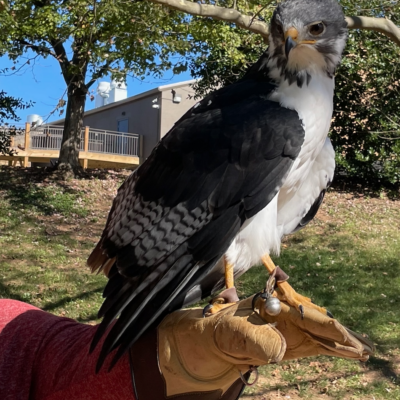Busy beekeepers
Apiculture, otherwise known as beekeeping, is one of the most beneficial backyard hobbies around. Bees ensure that local food crops are being pollinated and that a healthy ecosystem stays balanced. According to the Central Virginia Beekeepers Association, based in Charlottesville, these incredible insects will travel up to four miles to find food and aid in the production of over 90 food crops. Most delicious of all, an average hive produces about 30 pounds of surplus honey. A strong colony may produce two to three times what they actually need.
|
Local buzz: Nine-year-old Henri Schneehagen and his family raise bees at their Charlottesville home. |
For centuries, honey has been known to have many medicinal applications, from treating burns and functioning as an antiseptic, to adding a natural sweetener to food and drink.
Locally, one Charlottesville family has been enjoying the many benefits of their backyard hives for several years. “From what I’ve learned,” says Jason Schneehagen, “most of the bees get their nectar and pollen from the trees, not from flowers [growing from] the ground.”
The Schneehagen’s bees have developed an almost vertical flight pattern when exiting the hive, leaving their city neighbors undisturbed. However, the bees have swarmed in the past (usually due to overpopulation) and have departed their home, perhaps in search of tastier trees.
To learn more about beekeeping locally, visit www.centralvirginiabeekeepers.org.—Christy Baker
Flies with honey
Boy, are their wings tired! Here are a few in-flight bee facts:
- To make one pound of honey, a bee must visit approximately 2 million flowers and fly more than 55,000 miles.
- Honey bees visit 50 to 100 flowers during one nectar collection trip.
- Just two tablespoons of honey gives a bee enough fuel to fly once around the world.
Honey suckers
To make honey, bees collect nectar from flowers and mix it with enzymes excreted from glands in their mouths. The bee-spit/nectar mix is then stored in the wax chambers of the
honeycomb until the water content has been reduced. Once thickened, the cell is sealed with a thin layer of wax and then accessed as needed by the colony or harvested by the beekeeper.
|
|
Honey do list
We all know it’s the bees that deserve the credit for the flowery honey they work their little stingers off to make, but these five luscious dishes showcasing the golden sweetener are the bee’s knees.—Megan Headley
Escafé’s house salad, tossed in a honey-lavender vinaigrette and topped with apples, almonds and blue cheese, deserves more buzz than your average green salad.
The Fico pizza at Semolina takes honey to heavenly heights by drizzling it over a charred crust, layered with fluffy ricotta, balsamic-glazed figs, sharp pecorino and peppery arugula.
The Local keeps Virginia bees in work by using local honey from Hungry Hill Farm in the spicy glaze on its Virginia peanut-crusted Timbercreek Organic chicken served with sticky rice and a citrus slaw.
Tavola, which knows that honey has few tastier platforms than Italian cheese and crusty bread, serves a chunk of nectar-laden honeycomb along with pear mostarda, lambrusco jelly and aged balsamic as sweet and tangy condiments for its rotating quartet of cheeses.
The popular pastry baklava proves that buttery filo, honey and nuts are all you need for a finger-licking treat—but at Aromas Cafe, where they call on the crave-worthy cashew for baklava “fingers,” you’ll want to eat your fingers and lick them too.
/cvillebee0011_CRAMER.jpg)
/RI_-IMG_0797.jpg)
/RI_-IMG_0822.jpg)





